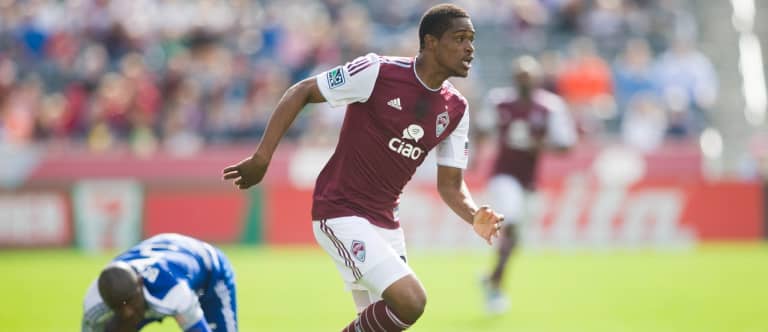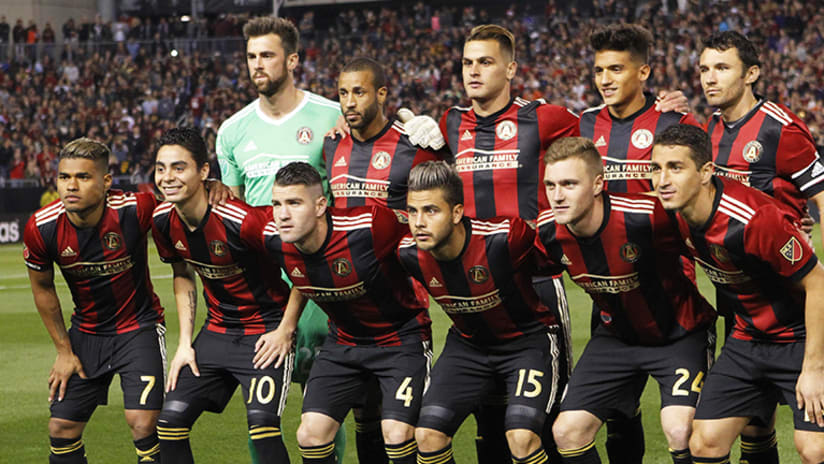MLS nerds got a double dose of big news this week, as the league released some beefed-up roster information on Tuesday, one day before dropping the full list of 57 (now 58) players who have had Targeted Allocation Money used on them this year.
The roster pages and TAM list are valuable tools for anyone thinking about MLS roster construction, and they remove a ton of busy work for folks like me who regularly write about this stuff.
The new roster info also brings to the forefront some of the league’s rules on how players count towards the salary cap. Some of you are undoubtedly already up to speed on various MLS roster classifications, but I thought I’d include a quick tutorial this week for the uninitiated.
As you’ll see when browsing the roster page of any club, players are broadly classified into three categories: Senior Roster, Supplemental Roster and Reserve Roster. The most important thing to know about the three classifications is that only Senior Roster players count towards a club’s salary cap. More details on the three designations are below:
Senior Roster – On-Budget:
- Consisting of up to 20 players and occupying roster spots 1-20, members of a Senior Roster are the only players that count towards a club’s 2017 salary cap of $3,845,000.
- Teams are required to have a minimum of 18 players on their senior roster – clubs with fewer than 18 players on their senior roster will be charged with the minimum cap hit for each of their unfilled senior roster spots.
- The maximum cap hit for any one player in 2017 is $480,625, though players can be paid more than that through use of Designated Player slots and Allocation Money.
Supplemental Roster – Off-Budget
- Occupying roster spots 21-24, players on a club’s Supplemental Roster do not count towards the salary cap.
- The Supplemental Roster may not include anyone making less than the senior minimum salary ($65,000 in 2017).
- All Generation adidas players are included on the Supplemental Roster until they graduate from the GA program.
Reserve Roster – Off-Budget
- The Reserve Roster consists of spots 25-30 on the roster, and can only be filled with players 24 or younger during the league year. Like the Supplemental Roster, players on the Reserve Roster do not count towards a club’s salary cap.
- This group is filled with players earning either A) the reserve minimum salary ($53,000 in 2017) or B) Homegrown Players earning more than the reserve minimum salary through the Homegrown Player subsidy.
- Players occupying roster spots 29 and 30 must be Homegrown Players, but will otherwise follow the same roster and budget rules as Homegrown Players occupying roster spots 25-28.
Orlando's incentive to hold on to Larin

Ever since he broke the MLS rookie scoring record with 17 goals back in 2015, transfer rumors involving Orlando City forward Cyle Larin (above) have swirled, picking up steam with every goal.
The 21-year-old Orlando City SC striker has been linked on several occasions with different European clubs, and has spoken openly about the possibility of eventually making a move across the Atlantic. He did so again in the buildup to Orlando’s season-opening win against New York City FC – a 1-0 result which saw Larin score the game-winner – telling ESPN’s Taylor Twellman in a halftime interview that a move to Europe “might be coming soon.”
Even if the Canadian international might be ready for a move, MLS regulations provide Orlando with an incentive to keep him around for the entire 2017 season. Larin's contract, a Generation adidas deal that he signed in 2015 after leaving the University of Connecticut following his sophomore season, runs through 2018 with Orlando holding options for 2019 and 2020.
According to the league’s roster rules, the cut of a transfer fee a club receives for any Generation adidas player or any player acquired via the MLS SuperDraft depends on how long the player has spent in MLS. If Orlando were to transfer Larin this summer, they’d only receive one-half of any transfer fee, with the other half going to the league. If they hold on to the third-year pro through 2017 and move him in 2018 or later, they’d receive two-thirds of any fee.
MLS Service Years |
Transfer/Loan Fee Revenue to Club |
|---|---|
1 |
1/3 |
2 |
1/2 |
3+ |
2/3 |
Of course, that breakdown might still not preclude Orlando from selling Larin this summer. For some deals, it's easier to move players across the pond during the summer window, when European clubs are in their offseason and typically make more moves than they do in the winter.
How close was Deshorn Brown to an MLS return?

A familiar face landed in a surprising place earlier this week, when it was announced that former Colorado Rapids striker Deshorn Brown (above) left Chinese League One club FC Shenzhen to sign with the USL’s Tampa Bay Rowdies.
A source close to Brown said that the Jamaican international drew interest from Colorado and several other MLS teams, but that a confluence of factors led to his signing with Tampa Bay.
Brown, 26, spent the 2013 and 2014 seasons with the Rapids, finishing second in the Rookie of the Year voting to teammate Dillon Powers after recording 10 goals and four assists in 31 regular season appearances in 2013 before scoring another 10 goals in 30 matches in 2014. The Jamaican international moved to Norwegian club Valerenga in March 2015, scoring 17 goals in 40 appearances with the club before making a $1.2 million move to Shenzhen last July.
Brown bagged seven goals in 14 matches with Shenzhen last year, but a coaching change – former England manager Sven Goran Eriksson took over for Dutch legend Clarence Seedorf in December after the team fell short of promotion to the Chinese Super League – left him on the outs heading into the 2017 season.
With prospects for playing time slim in China, Brown began looking for a new club from Florida, where his wife and two daughters live. He joined the Rowdies as a guest player in February, scoring in a preseason friendly against the Montreal Impact before officially transferring to the club on Tuesday.
According to the source, Brown, who certainly has the quality to contribute in MLS, is on a short-term contract in Tampa with an eye on moving back to Europe during the summer window. Given short-term signings and sales in MLS are rare, the move to Tampa was more practical ahead of a summer move and it precluded the Rapids or other interested MLS clubs from following up their interest with formal offers.
Game of the Week

Minnesota’s MLS home opener against expansion partner Atlanta will draw the most eyeballs, but the best match of Week 2 is taking place a little over 400 miles south of Minneapolis, where Sporting KC will open their 2017 home schedule by welcoming FC Dallas to Children’s Mercy Park on Saturday night (9 pm ET; MLS LIVE).
We’re only in Week 2, but this one could very well end up feeling like a playoff match, with SKC looking to follow up their season-opening draw at D.C. with a win over the defending Supporters’ Shield champs. I’m particularly interested to see how FCD’s Kellyn Acosta follows up his excellent performance in Dallas’ 2-1 win at LA last weekend against SKC’s stout central midfield. A strong performance could lead to a call from Bruce Arena, who is planning on attending the match, for the USA’s World Cup qualifiers later this month.
Enjoy the games, everyone.













